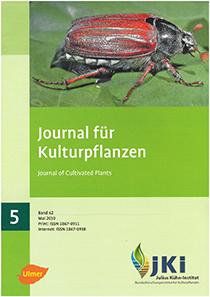Rye (<em>Secale cereale</em> L.) for biogas production – Breeding capability
DOI:
https://doi.org/10.5073/JfK.2010.05.02Keywords:
Bioenergy, biomass, plant genetic resources, NIRS, dry matter, correlations of traitsAbstract
The focal points of the present investigation were to examine the suitability of different rye forms (population varieties with forage grain use, hybrids, current breeding material, tetraploid rye, plant genetic resources) for biomass production, to identify the ideal growing stage for harvesting the biomass of these rye forms, to identify relevant traits for biomass production and to estimate their potential of gas production by NIRS analysis.
In a two-year trial, significant genetic variances in both the population per se (pps) performance and the testcross performance were demonstrated for total dry matter (TDM) yield at cutting dates 1 and 2 as well as for grain yield. At cutting dates 1 and 2 the average yields amounted to 70.1 and 131.9 dt/ha TDM, respectively. Forage rye materials were superior with regard to TDM yield at cutting date 1 while forage rye, plant genetic resources and a population variety achieved the highest TDM yield at cutting date 2 in the testcross performance. The heterotic increase averaged a substantial level of 9.3%, 11.6% and 32.3% at cutting dates 1 and 2 and for grain yield, respectively. Traits with high relevance for biomass production were identified (height, date of ear emergence, dry mass content) and correlations were calculated. The biogas production of the rye entries was assessed by quantifying the essential ingredients for biogas production via NIRS. Correlations between the TDM yield, the biogas production and the content of lignin were determined. The high capability of different rye forms for bioenergy recovery was underlined.
Downloads
Published
Issue
Section
License
The content of the journal is licensed under the Creative Commons Attribution 4.0 License. Any user is free to share and adapt (remix, transform, build upon) the content as long as the original publication is attributed (authors, title, year, journal, issue, pages).
The copyright of the published work remains with the authors. The authors grant the Journal of Cultivated Plants, the Julius Kühn-Institut and the OpenAgrar repository the non-exclusive right to distribute and exploit the work.







